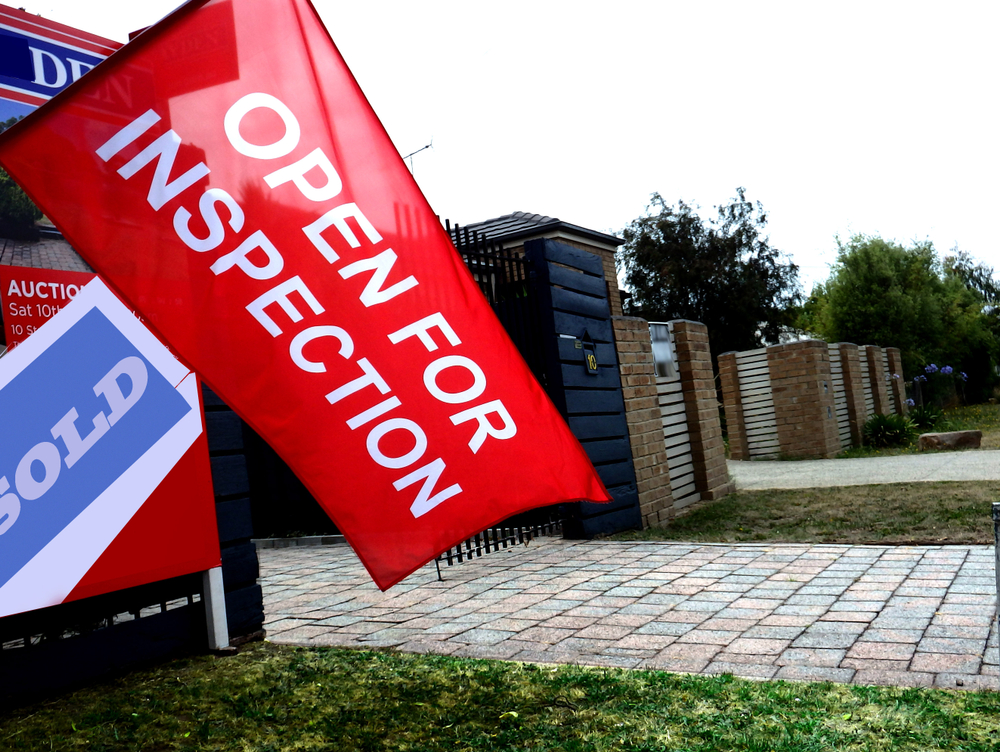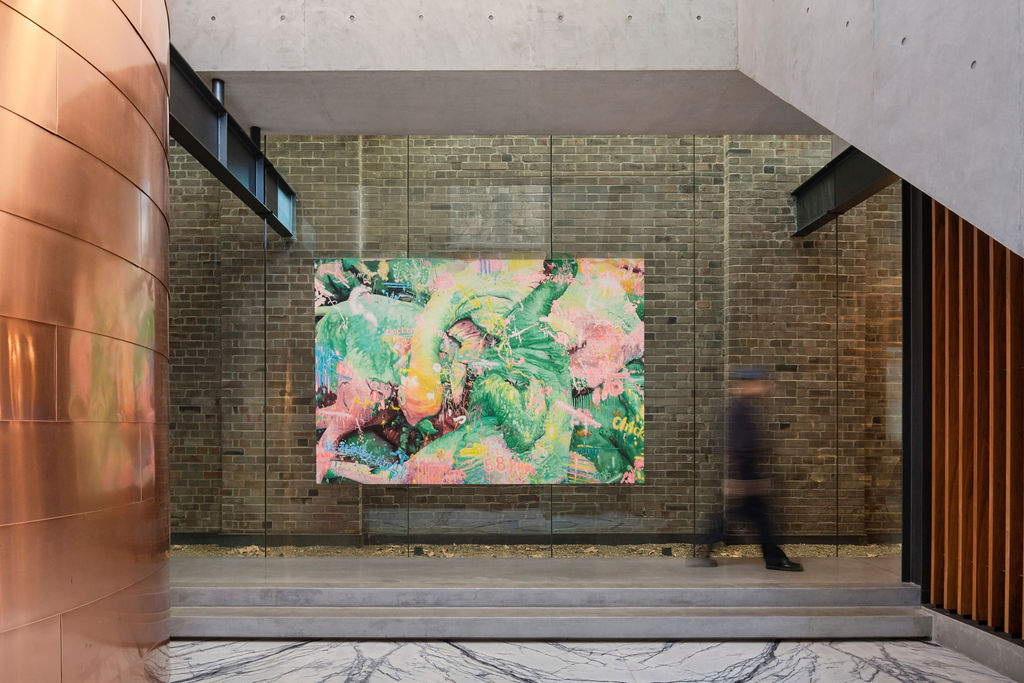The surprising impact of southern buyers on the Gold Coast property market
The national hotspot for pandemic migration, expectations on the Gold Coast have now risen as newly settled southern buyers seek high-calibre homes with luxury features and next-level amenities
From the Winter 2024 issue of Kanebridge Quarterly magazine. Order your copy here.
Thirty years ago, the idea that South East Queensland — and in particular the Gold Coast — would be one of the hottest prestige property markets in the country would have raised more than a few eyebrows.
But a new level of affluence led by the post-COVID domestic migration from the southern states means the cultural cringe once associated with the region is all but gone, with a deluge of luxury developments complete with top-end features and inclusions creating what is fast becoming a high-end, high-median market.
Figures from the Australian Bureau of Statistics show that between June 2020 and June 2021 — the height of COVID lockdowns in the southern states — more than 90 percent of net interstate migration (or around 31,000 people) was to Queensland. And the population growth is showing no signs of slowing down. Queensland’s Department of State Development and Infrastructure expects the state’s population to boom during the next 20 years, from 5.4 million to an estimated 8 million by 2046.
This influx of people has, unsurprisingly, meant a distinct change in the state’s property market with research from Ray White showing the top five percent of Brisbane’s housing market – homes priced at $1.8 million or more – have grown by 213 per cent in the past 10 years, outperforming the growth of an average-priced house in that time.
An hour down the Pacific Motorway, things aren’t much different. In the space of a generation, the Gold Coast has gone from quaint (and quiet) beachside strip to family holiday destination and now, according to the figures from the Real Estate Institute of Queensland (REIQ), one of SEQ’s million-dollar addresses.
Previously only a position held by Brisbane and Noosa, the Gold Coast took its place on the podium late last year, hitting the million-dollar median mark for house prices for the first time in the December 2023 quarter.
“In lifestyle locations like the Gold Coast, that just surpassed a $1 million house median, most of the stock coming to market is set to cater to luxury living, further perpetuating a high-end, high median market,” says REIQ CEO Antonia Mercorella.
“Interstate buyers are moving to Queensland to chase a better lifestyle and as such, they’re seeking homes that are reflective of the outdoor Queensland lifestyle, with exterior living areas such as balconies, patios and verandas, ideally with the property having a pool on site.”
The Gold Coast is home to Queensland’s three most expensive streets with data from Ray White revealing Hedges Avenue in Mermaid Beach (nicknamed Multimillionaire’s Row by locals), Edgecliff Place in Hope Island and Admiralty Drive in Surfers Paradise, hold the top three spots with median buy-ins of $10.5 million, $6.675 million, and $6.119 million respectively.
Following significant gains during the pandemic, the belief was the South East Queensland property market would tail off significantly, as demand, particularly from the southern states, waned.
But contrary to expectations, there’s no sign of demand slowing down, with interstate buyers still heading north in droves, enticed by five-star features and a beach lifestyle, as Sydney and Melbourne luxury beachfront properties are perceived as increasingly high-cost options. SEQ and northern NSW developers and architects have responded in kind with some of the country’s most exciting and luxurious new residences popping up along the glitter strip including the billion-dollar Jewel Residences at Broadbeach; Burleigh Heads’ much-anticipated Mondrian Residences, and the 38-level Royale in the heart of Surfers Paradise, due for completion in 2025 and featuring six-star lifestyle amenities across the first two floors of the development.
Brent Thompson’s Siera Property Group, who have projects on Chevron Island and further south in Bilinga, are developing Enderley which features 54 apartments across a 25-level, BDA Architecture-designed tower in Surfers Paradise, with a maximum of three apartments per floor.
“The forecast for 2024 in the Gold Coast looks promising, as there is a projected sustained demand,” says Thompson.
“This surge is fuelled by a specific demographic: homeowners aiming to enrich their way of life. These buyers typically seek hassle-free accommodation, like premium apartments, that complement their pursuit of a higher quality of living.

“The allure of the Gold Coast lies in its abundant natural attractions such as beaches, eateries, and seamless transportation options, combined with artificial amenities like wellness centres, rooftop pools, and exclusive dining venues, making it an enticing choice for these purchasers.”

On the Gold Coast’s northern fringe, veteran developer Lewis Land Group are behind Harbour Shores, a $1.5 billion masterplan in Biggera Waters which has already secured a 6 Star Green Star Communities V1.1 rating from the Green Building Council of Australia, making it the Gold Coast’s highest-rated Green Star Community.
“There’s more cranes on the Gold Coast at the moment than I’ve ever seen before,” says Amir Mian, principal and managing director of Gold Coast-based luxury real estate agency Amir Prestige.
Mian, who recently sold a $24 million tri-level penthouse in Burleigh Heads’ Glasshouse development, says buyers — particularly those moving to the region from Sydney and Melbourne — are increasingly looking for high-end inclusions such as wellness features and work-from-home amenities that go beyond a spare bedroom-turned-office space.
“What we’re finding is that buyers coming into the northern NSW and Gold Coast markets are looking for those luxury inclusions, whether they’re buying an apartment or a house,” he says.
“In homes, we’re seeing Palm Springs and Hamptons-inspired designs with amazing gardens, high-end finishes and, of course, pools and huge outdoor entertaining areas to take advantage of our climate.”
Adrian Parsons, managing director of Gold Coast-based project marketing firm Total Property Group (TPG), has seen buyer demand for high-calibre luxury homes erupt recently.
He says the post-COVID migration has had a dramatic effect on the quality of properties coming to market in SEQ and, for developers, has even changed the direction of their development, with a focus on more space.
“Traditionally developers would be building smaller apartments here to suit investors, but we’ve well and truly transitioned from that with spacious, high-end luxury apartments designed for interstate residents and their families moving here permanently,” he says.

“One of the things we’re seeing in new developments are these next level work-from-home facilities — we’re talking co-working spaces and business centres so people can still work from home, but they’re not confined to a home office space or spare bedroom.”
Not surprisingly, wellness features such as pools, saunas, steam rooms, gymnasiums and cold plunge pools are also on the must-have list.
“Many of these new leading landmark developments in SEQ are taking a lot of their cues from luxury hotels when it comes to amenities — think wellness zones, private dining rooms, residents’ bar areas and rooftop pool and BBQ areas,” says Parsons.
“The Gold Coast is maturing; it’s not embarrassing to want to live here anymore.”
A divide has opened in the tech job market between those with artificial-intelligence skills and everyone else.
A 30-metre masterpiece unveiled in Monaco brings Lamborghini’s supercar drama to the high seas, powered by 7,600 horsepower and unmistakable Italian design.
Buyer demand, seller confidence and the First Home Guarantee Scheme are setting up a frantic spring, with activity likely to run through Christmas.
The spring property market is shaping up as the most active in recent memory, according to property experts Two Red Shoes.
Mortgage brokers Rebecca Jarrett-Dalton and Brett Sutton point to a potent mix of pent-up buyer demand, robust seller confidence and the First Home Guarantee Scheme as catalysts for a sustained run.
“We’re seeing an unprecedented level of activity, with high auction numbers already a clear indicator of the market’s trajectory,” said Sutton. “Last week, Sydney saw its second-highest number of auctions for the year. This kind of volume, even before the new First Home Guarantee Scheme (FHGS) changes take effect, signals a powerful market run.”
Rebecca Jarrett-Dalton added a note of caution. “While inquiries are at an all-time high, the big question is whether we will have enough stock to meet this demand. The market is incredibly hot, and this could lead to a highly competitive environment for buyers, with many homes selling for hundreds of thousands above their reserve.”
“With listings not keeping pace with buyer demand, buyers are needing to compromise faster and bid harder.”
Two Red Shoes identifies several spring trends. The First Home Guarantee Scheme is expected to unlock a wave of first-time buyers by enabling eligible purchasers to enter with deposits as low as 5 per cent. The firm notes this supports entry and reduces rent leakage, but it is a demand-side fix that risks pushing prices higher around the relevant caps.
Buyer behaviour is shifting toward flexibility. With competition intense, purchasers are prioritising what they can afford over ideal suburb or land size. Two Red Shoes expects the common first-home target price to rise to between $1 and $1.2 million over the next six months.
Affordable corridors are drawing attention. The team highlights Hawkesbury, Claremont Meadows and growth areas such as Austral, with Glenbrook in the Lower Blue Mountains posting standout results. Preliminary Sydney auction clearance rates are holding above 70 per cent despite increased listings, underscoring the depth of demand.
The heat is not without friction. Reports of gazumping have risen, including instances where contract statements were withheld while agents continued to receive offers, reflecting the pressure on buyers in fast-moving campaigns.
Rates are steady, yet some banks are quietly trimming variable and fixed products. Many borrowers are maintaining higher repayments to accelerate principal reduction. “We’re also seeing a strong trend in rent-vesting, where owner-occupiers are investing in a property with the eventual goal of moving into it,” said Jarrett-Dalton.
“This is a smart strategy for safeguarding one’s future in this competitive market, where all signs point to an exceptionally busy and action-packed season.”
Two Red Shoes expects momentum to carry through the holiday period and into the new year, with competition remaining elevated while stock lags demand.
A cluster of century-old warehouses beneath the Harbour Bridge has been transformed into a modern workplace hub, now home to more than 100 businesses.
ABC Bullion has launched a pioneering investment product that allows Australians to draw regular cashflow from their precious metal holdings.




















